Configure Time Settings on an RV34x Series Router
Available Languages
Objective
The system clock on the RV34x Series Router provides a network-synchronized time-stamping service for software events such as message logs. Without synchronized time, accurate correlation of log files between devices is difficult to maintain. Configuring the time settings on your router is important because it can help troubleshoot network issues such as system log services that display each and every log entry with a time stamp.
The system time can be configured either manually or automatically. Manual configuration is helpful when your network is not connected to a Network Time Protocol (NTP) server. NTP is used to synchronize the client or server time with another server time or reference time source.
This article provides you with instructions on how to configure time settings on your RV34x Series Router.
Applicable Devices
- RV34x Series
Software Version
- 1.0.1.16
Configure Time Settings
Step 1. Log in to the web-based utility of the router and choose System Configuration > Time.
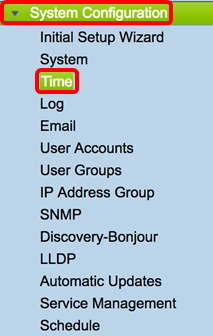
Step 2. From the Time Zone drop-down menu, choose a time zone where your network is located.
Note: For this example, (GMT-6:00) America/Costa Rica is chosen.
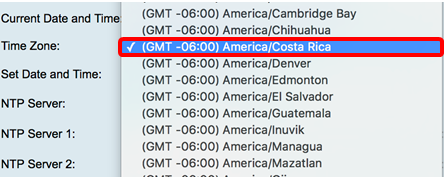
Step 3. In the Set Date and Time area, click a radio button to determine how the system will obtain the clock and time settings for the system. The options are:
- Auto — Automatically sets the date and time based on an internal Network Time Protocol (NTP). If this is chosen, proceed to Step 4.
- Manual — Manually enter the date and time in the Enter Date and Time area. If this option is chosen, skip to Step 7.
Note: In this example, Auto is chosen.

Step 4. (Optional) If you chose Auto in Step 3, click a radio button for the NTP server. The options are:
- Default — Obtains date and time through public NTP servers. If this is chosen, skip to Step 11.
- User Defined — Enter the IP Address of the NTP server.
Note: In this example, User Defined is chosen.

Step 5. (Optional) In the NTP Server1 field, enter an NTP server address. A host name can consist of one or more labels, which are sets of up to 63 alphanumeric characters. If a host name includes multiple labels, each is separated by a period.
Note: For this example, 0.ciscosb.pool.ntp.org is used.

Step 6. (Optional) In the NTP Server 2 field, enter a second NTP server address to serve as a failover.
Note: In this example, 1.ciscosb.pool.ntp.org is used.

Step 7. (Optional) If you chose Manual in Step 2, click the calendar icon to open the calendar. Click the left or right arrow to select the month or through the month drop-down menu.
Note: In this example, February is used as the month.
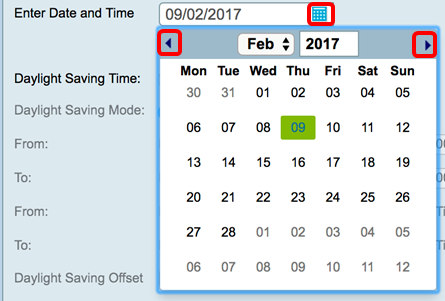
Step 8. (Optional) Enter the year in the Year field next to the Month drop-down menu.

Step 9. (Optional) Click on the date today.
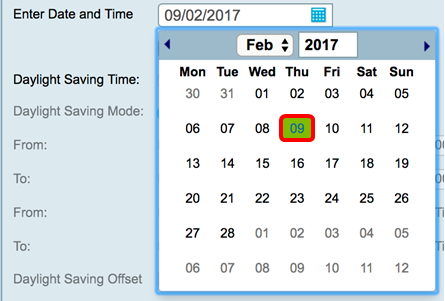
Step 10. (Optional) In the drop-down menus below the Date and Time field, set the Hour, Minute and Second. This is in military format.
Note: In this example, 10:40:22 is used.

Daylight Savings Time
Step 11. (Optional) Check the Daylight Saving Time check box if your country observes Daylight Savings Time (DST).

Step 12. (Optional) Choose a Daylight Saving Mode by clicking a radio button.
The options are:
- By Date — Choose this mode to specify parameters for DST according to specific days and time of the year.
- Recurring — Choose this mode to set DST to occur between two days of different months.

By Date
Step 13. If you chose By Date in Step 12, in the From area, set the month, day, and time in the respective fields to set when DST should begin.
Note: For this example, the DST will begin on March 2nd at 2:00 AM.

Step 14. In the To area, set the month, day, and time in the respective fields to set when DST should end.
Note: For this example, the DST will end on November 11th at 2:00 AM.

Recurring
Step 15. If you chose Recurring in Step 12, in the Month field, enter a number corresponding to the month of the year DST begins in your region.
Note: Numbers entered in this field must not be greater than the numbers entered in the To field. For this example, 3 is used to represent March.

Step 16. In the Week field, enter the week of the month you want DST to begin.
Note: For this example, 1 is used to show the 1st week of the month.

Step 17. From the Day drop-down menu, click the day of the week when DST begins in your region.
Note: For this example, Sunday is used.

Step 18. In the Time drop-down list, use the up or down arrow to choose the time of the day when DST begins in your region.
Note: In this example, 2:00 AM is used.

Step 19. In the To area, repeat the steps from Step 15 to Step 18 to specify the month, week, day, and time DST will end in your region.
Note: In this example, DST is set to end on November 1st week on a Sunday at 02:00AM.

Step 20. From the Daylight Saving Offset drop-down list, choose the number of minutes that DST should offset the current time.
Note: For this example, +15 is used.

Step 21. (Optional) To save the configuration permanently, go to the Copy/Save Configuration page or click the  icon at the upper portion of the page.
icon at the upper portion of the page.
You should now have successfully configured the time settings on the RV34x Series Router.
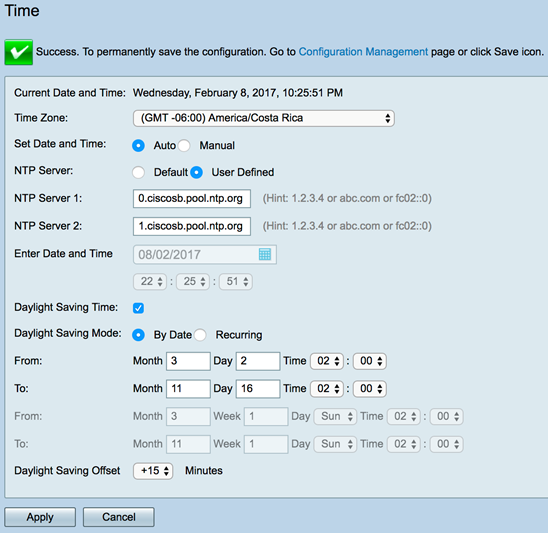
 Feedback
Feedback